Can The Ground Cause A Fumble In College Football? [ANSWERED]
College football is an intense sport, and every fan has seen their team fumble a big play away. Fans also commonly ask if the ground can cause a fumble.
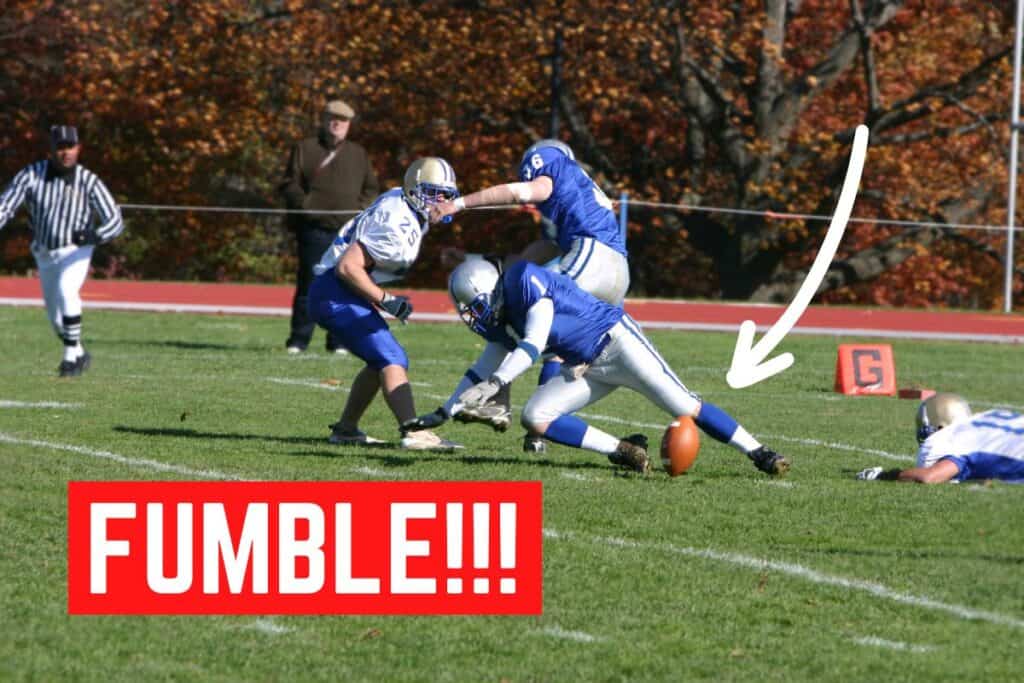
The ground can cause a fumble, but it’s rare. For this to happen, the ball carrier would need to fall in a way that only resulted in their hands, feet, or the ball hitting the ground without any other body part. Then the ball would need to come loose and get recovered by the defense.
We have compiled all of the rules enforced around fumbles in college football today to help explain whether the ground can cause a fumble. Keep reading below to become well-versed in college football rules while learning more about fumbles.
Can The Ground Cause A Fumble In College Football?
The ground can cause a fumble in college football, but it’s a rare occurrence and one that requires extensive explanation to understand.
Because fumbles can be game-changing plays in college football, they are automatically reviewable so the referees can confirm they got the call right. Losing possession will turn the game’s momentum on its head too.
So how exactly does the fumble rule work? And how can the ground cause a fumble?
The most common way to think of a fumble is when the ball carrier has the ball knocked loose by a defender. The ball hits the ground, and the defense recovers to regain possession.
But there is a rare scenario when the runner gets tackled and falls awkwardly, so only the hands and the ball hit the ground before any other body part of the runner. If this were to happen, it would be a fumble.
The ball carrier is only ruled down in college football when a body party like an elbow, knee, shin, or forearm touches the ground.
It’s also much harder for this to happen in college because a runner is ruled down automatically, whereas, in the NFL, the runner needs to be touched by a defender when they are down.
How Can The Ground Cause A Fumble In College Football?
In college football, there are plenty of rule differences compared to the pro game in the NFL. One of the critical differences is when runners are ruled down, which directly can impact how often the ground can cause a fumble.
There are three ways this can happen, and we list each of the possibilities below to better understand how it works.

Only The Ball Touches The Ground
When players carry the football, they control it and are considered to have possession. If the ball comes loose before the runner is considered down, it gets ruled a fumble.
For the ground to cause a fumble, the player would need only the ball and their hands to touch the ground because if any body part like the head, knee, forearm, or elbow touches first, it’s not a fumble.
Only The Runner’s Hand Touches The Ground
Another possible way the ground can cause a fumble in college football is when only the runner or ball carrier’s hand touches the ground before the ball comes loose. The hand does not mark a runner down.
Because of this, anything that happens after the hand touches the ground is completely legal, and the play is still live. If the ground knocks the ball loose from the runner’s hand before any other body part touches the ground, it’s a fumble.
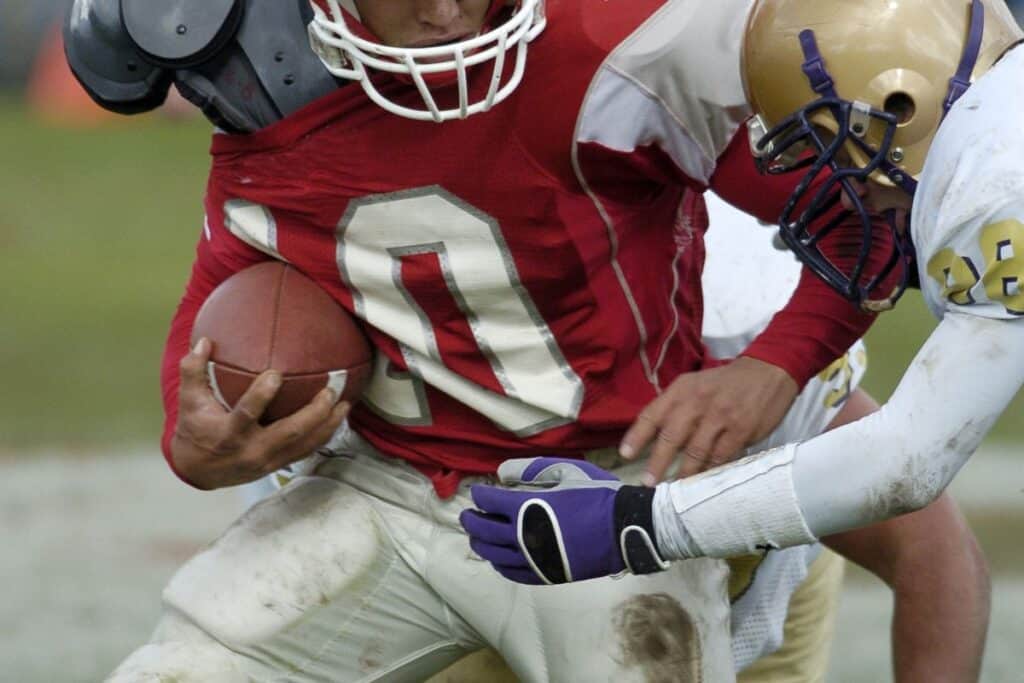
Only The Runner’s Foot Touches The Ground
For a player to fumble, they must first have possession of the ball. The player’s feet are always on the ground, which does not rule them down, so it’s still possible for them to fumble.
If only the ball carrier’s feet touch the ground, then the ground can cause a fumble. This happens if the player gets tackled awkwardly or if they dive forward and the ground knocks the ball out before any other body part hits the ground.
College Football Fumble Rules Explained
It is important to define a fumble to understand how the ground can cause fumbles in college football. Below are some of the NCAA college football standards for how fumbles are ruled during games.
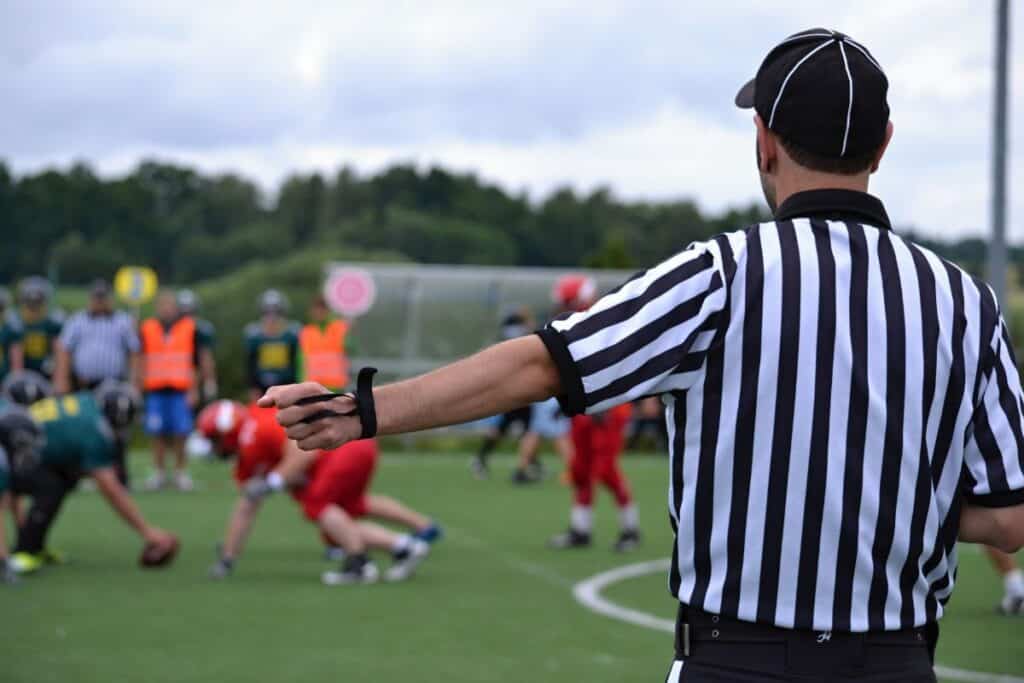
Ball Carrier Does Not Need To Be Tackled
A fumble is a football play when the ball is dropped to the ground and then recovered by the opposing team. Fumbles can also occur when a player is tackled, and the defender knocks the ball away.
But one major rule change between college football and the NFL is whether the runner needs to be tackled to be down. In college, if a runner falls and their knee, forearm, head, elbow, or shin touches the ground, then they are considered down automatically.
This would not be the case in the NFL unless the defender causes them to fall. Any runner in the NFL who falls on their own can get up before being touched and keep running.
It’s more common to see the ground cause a fumble in the NFL and extremely rare in college football because of this.
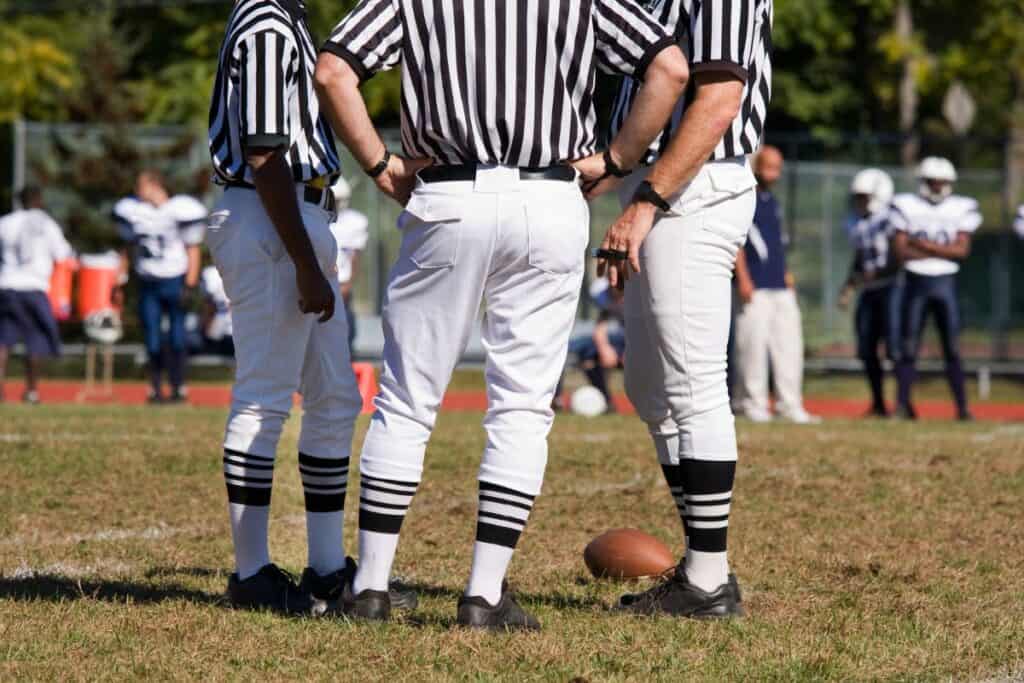
Ball Carrier Loses Possession Of The Ball
The basic understanding of a fumble is when the runner loses possession of the ball before touching the ground. This can be while running or as they are tackled to the ground.
It’s ruled a fumble when the ball is loose from the runner’s hands before any body part besides the foot or hand touches the ground.
Muffed Punts & Kicks
A muffed punt or kick is when a player drops the ball before they can catch it on a kick return or punt return. When the ball is kicked, it’s a live ball, and if the receiving team touches it first, then the defense can recover it.
It can happen on any part of the field, but it most often happens in punting and kicking situations. This is known as an “uncontrolled touch,” so the ball is on the ground after being touched, and both teams are allowed to recover it.

Forward Progress
Forward progress is ruled by the referees in a football game when the ball carrier’s momentum is stopped. This helps when spotting the ball, so if a runner gets driven backward by multiple defenders, the ball is spotted where the forward progress was stopped.
This is necessary to mention when discussing fumbles because it’s common to see players fumble after the forward progress is stopped. This is not allowed, and the offensive player is protected, so this cannot happen.
Down By Contact
Down by contact is more of an NFL rule than a college football rule, but it’s important to note for fumbles. This is when a defender touches a player, which results in them falling to the ground.
It’s considered a tackle, and where the player falls is where the play gets stopped, and the ball is spotted for the next play.
How Else Can The Ground Cause A Fumble In College Football?
We have discussed how the ground can directly cause a fumble by forcing it loose before the runner is down. But it can also indirectly cause a fumble based on the surface type and weather conditions.
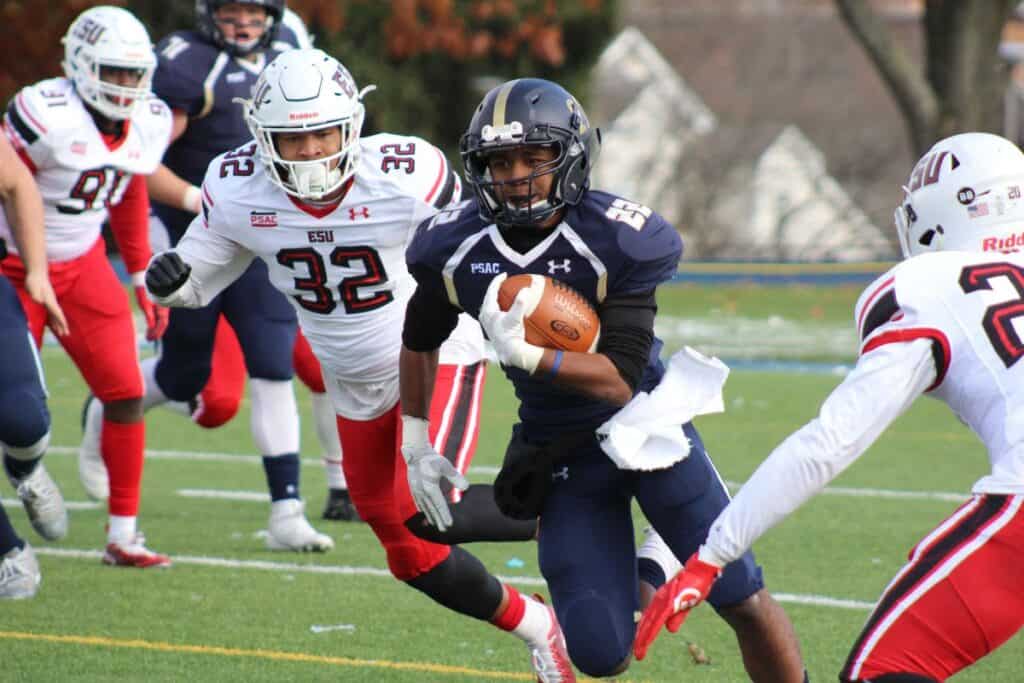
Surface Type
The type of surface the game is played on can also impact the likelihood of fumbles. For example, the grass field is more likely to wear and become unstable in bad weather conditions, resulting in more fumbles.
Players prefer grass because it causes fewer non-contact injuries than turf, but turf is much more slip resistant in rainy conditions. This can help with player balance and ball security.
Weather Conditions
Weather conditions can also influence fumbles during football games. While this is not the ground directly causing a fumble, it becomes harder to hold onto the ball when the ground is wet from rain or snow.
Players struggle to maintain their footing, increasing the chances they will fall awkwardly, or the ball will slip from their hands for a fumble. It’s common to see more fumbles during football games in the rain or snow for this reason.
Video: Slow Motion Video of Ground Causing Fumble
Key Takeaways
- The ground can cause a fumble in college football if only the ball touches the ground, the runner’s hand touches the ground, or the runner’s feet touch the ground.
- It’s extremely rare for the ground to cause a fumble in college football because the runner is automatically ruled down when a knee, elbow, forearm, shin, or head touches the ground.
- The ground can also indirectly cause a fumble based on the surface type and weather conditions during the football game.
Recommended Article: Can You Fumble The Ball Forward In College Football?
